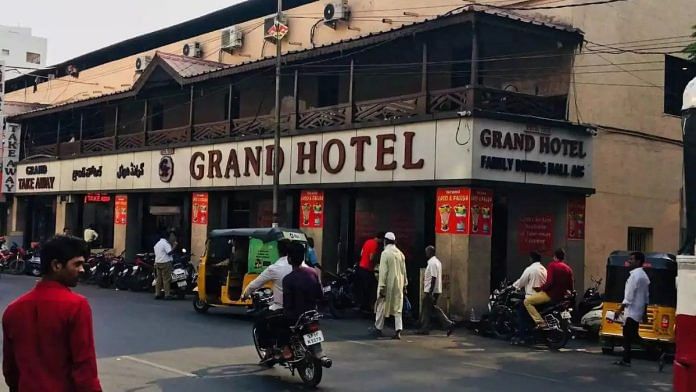Drinking Irani chai is like gospel for us Hyderabadis. It’s like mother’s milk, and growing up, I would stop by an Irani cafe near my house just to sit and waste time with a cup of tea. There was no other agenda. In retrospect that is (or was) the very essence of these cafes—to leisurely relax or do whatever you wanted with a cup of tea and an overstretched sense of time.
No doubt, Irani cafes were (and to a large extent, still are) patriarchal or male-dominated spaces, but they continue to form part of Hyderabad’s core culture. Irani chai is part of all of our childhoods, and I see many NRIs or Hyderabadis who have settled abroad come back with their children just to make them experience that. The nostalgia is that strong.
However, everything I love about Irani cafes has changed in terms of how they function; mostly due to commercial reasons and population explosion in the city.
Shrinking spaces, growing business
What were once havens for leisurely sipping chai and discussing the world have today turned into fast-paced eateries where sitting is not encouraged for long. Of course, this does not apply to every single place, but to the more famous and traditional ones that we’ve known.
For example, it was once common for Irani joints to be small spaces serving chai and cheaper food (usually on the ground floor), while the air-conditioned sections were upstairs. But now, especially in the last few years and maybe due to the evening rush, Irani cafes have ditched the chairs and replaced them with high tables for people to have their tea and leave.
While I understand that business is business, the change has also left my heart longing for what we used to have—a space to just sit and chat. One reason these spaces have changed is to accommodate more people without making others wait. After all, Hyderabad now has more than one crore people. When I started my career about 12 years ago, it was my ritual to buy a bunch of newspapers and read them early morning at Irani cafes. In fact, I remember that I used to proudly tell everyone that unlike Mumbai’s Parsi cafes where using laptops or phones is not encouraged, I could sit for even two hours in Hyderabad’s Irani cafes and just have chai and snacks.
Garden Cafe (established in 1941) at Secunderabad and Grand Hotel (established in 1935) at Abids, two of the oldest ones, were my favourite spots.
While Garden Cafe today is just has a tiny bakery with little space, Grand Hotel has high tables (though it still has a non-AC section on the ground floor, that’s more for eating, not just chai). Why am I fussing over this? At one point, Hyderabad’s own MF Hussain used to paint at Garden Hotel. Similarly, one of the ex-chief ministers of the erstwhile Andhra Pradesh, T Anjaiah, reportedly used to have his personal table at the same hotel.
Even the well-known Paradise Hotel in Secunderabad has gone through a similar change. It does not encourage people to linger with just chai on their bills, even in its smaller cafe behind the restaurant. It also has a bakery that once used to have a lot of high tables where I’ve spent countless hours chatting with people. The bakery has now gotten rid of most of its tables, and today most people just stand outside.
Also read: Hyderabad has an endless obsession with proving Queen Bhagmati’s existence. It’s futile
History of Irani chai
I’ve actually become friends with some of the owners of these cafes due to the countless hours I have spent there. There are a few of the old ones that have not changed, but one can’t find that comfort anymore in every corner of Hyderabad. Some of them have also shut down over the years. Ramser Cafe in Secunderabad was one such popular joint.
For those who don’t know, Iranians don’t actually drink the Irani chai sold in Hyderabad. They drink black tea. The chai we get here is called so because of Irani migrants who settled in the city in the early 20th century, seeking better opportunities. The concept of ‘Chai khanas’ is a centuries-old tradition. The Irani cafes started brewing tea by boiling both the milk and decoction together, realising that people in Hyderabad (and India) were used to tea with milk. It’s called Irani chai simply because the owners and the brewers were Iranian.
Over time, Irani cafes became spaces for political discussions, especially for students of the historic Nizam College. As for me and people of my generation, I believe we will be the last ones to truly experience that vibe. In fact, except for a few places, I can’t remember the last time I just sat down to have chai like I used to. I suppose change is inevitable.
Yunus Lasania is a Hyderabad-based journalist whose work primarily focuses on politics, history and culture. Views are personal.
(Edited by Ratan Priya)






